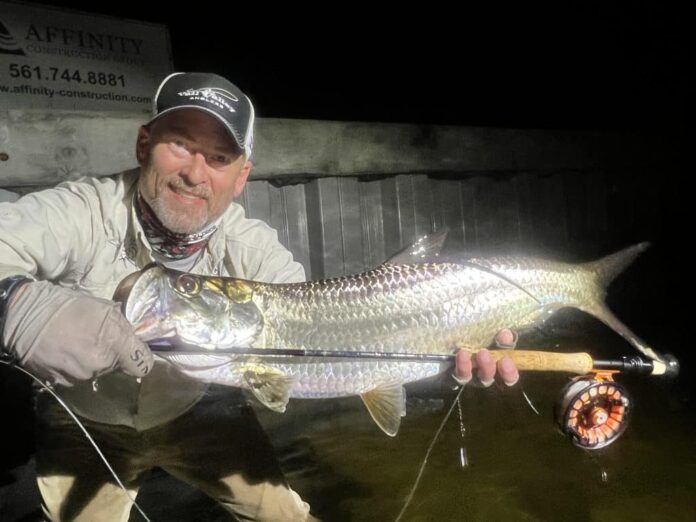Michael Salomone/Courtesy photo
Cork handles come in a vast array of styles, sizes and designs. Reach for a rod in a fly shop and you’ll notice the prominent grip is made of cork and tapered towards the tip of the handle, with a flared butt or bottom end near the reel seat. Called a reverse half wells, this style of grip is the most popular and is often referred to as the Western handle style.
A cork handle provides a grip design that enhances the performance of the fly rod. A functioning design reduces arm and hand fatigue and provides swift purchase when a trophy trout breaks across current. Some grip styles increase accuracy while others focus more on force to increase line speed and extend casting distance.

Michael Salomone/Courtesy photo
The Western style offers anglers the most versatility for grip variety. The mid-handle swell accommodates most hand sizes for comfort in the palm of your hand. The tapered front focuses casting aim for accuracy. The finger-on-top casters will experience the most comfort when casting with a Western grip. Also, creeping forward to allow the fingertip to touch the rod blank for increased strike detection is more easily accomplished with the Western grip style.
Structurally, the Western grip provides ample material at the rear or bottom of the handle to cover the top of the reel-seat hardware. Not only does the rearward swell provide the anchor for the heel of your hand, it houses the reel-seat rod junction seamlessly. This flare provides a firm anchor for the heel of your hand for those who grip and hold the rod close to the reel.
Rod manufacturers needed to come up with a “standard” for mass production purposes. The Western grip has become the most commonly found grip in fly shops for rods in the 5wt category. Common grip styles change when you step up in rod size, like saltwater fly rods. Rarely will the reversed half wells or Western style grip be found on a saltwater fly rod.

Support Local Journalism

Michael Salomone/Courtesy photo
The necessity to cast great distances is more prevalent in saltwater fly fishing, making a full wells grip a standard style. The full wells is flared at the rear, near the reel seat, tapers then swells mid-handle for the angler’s palm, tapers again and then flares at the top of the handle. This style gives the saltwater angler the ability to apply a stronger force to the casting stroke to gain maximum line speed from fast action fly rods.
When dealing with windy casting conditions, the full wells style grip excels. The forward flare allows for anglers to bear down and punch a cast into the wind. Cross breezes are a hazard that will push your casting loop into places you don’t want it to go. A fast action fly rod with a full wells grip gives the angler the best tools for dealing with adverse casting conditions.
When a fly rod is paired with the correct grip style, accuracy and casting become more of a natural action. With little thought, the angler casts with increased precision, like throwing darts at a dart board. When the rod and grip function together, casting to targets becomes easier to attain.
Structurally, saltwater fly rods place a tremendous amount of force and pressure on the reel seat and handle — the kind of strain that lightweight fly rods in the 2wt and 3wt category will never exert. Inferior handles will fall apart when exposed to the harsh conditions that come with saltwater fly fishing if not properly constructed.
One word of caution when it comes to flies and cork handles. Never use the cork handle for fly storage. Meaning, don’t stick the hook of your fly in the cork handle, especially if it is your guide’s rod. Hooks will break down expensive cork overtime. Any imperfections from damage made from hooks worsen and require repair. No hooks in your cork.

Michael Salomone/Courtesy photo
A well paired grip enhances the casting action of the rod. Small rods like 2wt and 3wts benefit from reduced material to lighten overall weight in the hand. The workhorse rods, the 5wts, benefit from a common grip style that accommodates a variety of casting preferences. Larger caliber, saltwater handles are designed to give anglers the control to accelerate line speed to deal with heavy flies, make longer casts and punch through strong winds.
Credit: Source link































